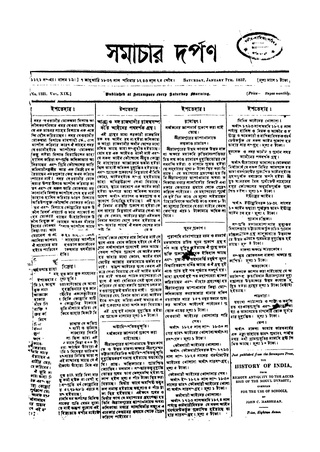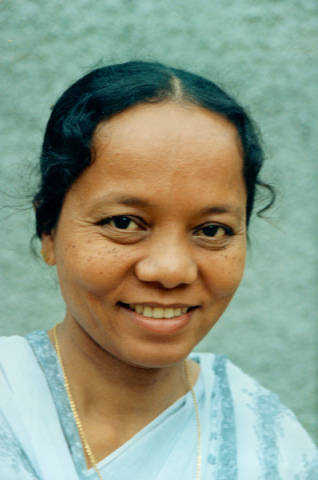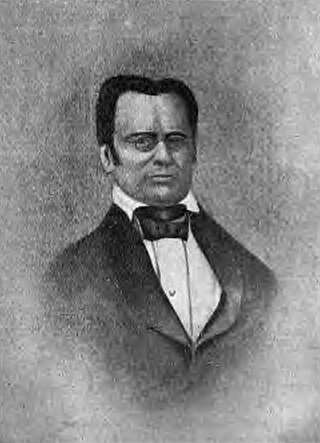
Serampore College is located in Serampore, in West Bengal state, India. Established in 1818, it is the third oldest college in the country after CMS College, Kottayam and Presidency College Calcutta, and one of the oldest continuously operating educational institutes in India. The college consists of two entities: The theological faculty and a separate college with faculties of arts, science, commerce.

William Carey was an English Christian missionary, Particular Baptist minister, translator, social reformer and cultural anthropologist who founded the Serampore College and the Serampore University, the first degree-awarding university in India.

Christians in Bangladesh account for 0.30% of the nation's population as of 2022 census. Together with Judaism and Buddhism, they account for 1% of the population. Islam accounts for 91.04% of the country's religion, followed by Hinduism at 7.95% as per 2022 census.

Joshua Marshman was a Baptist missionary in Bengal, India from 1799 until his death. He was a member of the Serampore trio with William Carey and William Ward. The trio founded Serampore University, many primary and secondary schools, and translated and published a large number of works, including translations of the Bible. Marshman was "an accomplished scholar, linguist and theologian and was a prolific author and polemicist." His mission involved social reforms and intellectual debates with educated Hindus such as Raja Ram Mohan Roy.

John Clark Marshman was an English journalist and historian. He was editor and publisher of the Calcutta-based Friend of India, and was involved with several other Indian publications.

Hannah Marshman was an English missionary who founded a school at Serampore, India.
Gurukul Lutheran Theological College and Research Institute is an ecumenical seminary situated in Chennai, Tamil Nadu, South India. It is affiliated to the Senate of Serampore College (University).

William Ward (1769–1823) was an English pioneer Baptist missionary, author, printer and translator.

The Senate of Serampore College (University) is an ecumenical regulatory and affiliating body for Christian theological education, which works in partnership with Bible colleges, seminaries and theological research institutes in the Indian subcontinent that comply with its regulations and standards. It is located in Serampore in West Bengal, India. Serampore was granted the status of university by King Frederick VI of Denmark in 1829.
The Presbyterian Church of India (PCI) is a mainline Protestant church based in India, with over one and a half million adherents, mostly in Northeast India. It is one of the largest Christian denominations in that region.

The Asia Pacific Baptist Federation (APBF) is a federation of 65 Baptist associations and is one of six regional fellowships in the Baptist World Alliance. The headquarters is in Okinawa City, Japan.

Samachar Darpan was a Bengali weekly newspaper published by the Baptist Missionary Society and published on 23 May 1818 from the Baptist Mission Press at Serampore in the first half of the 19th century. It is considered to be the first Indian-language newspaper, although some historians contend that the Bengali weekly Bengal Gazetti or Vangal Gazette published by Ganga Kishore Bhattacharya had begun publication earlier.

Christianity in West Bengal, India, is a minority religion. According to the 2011 census of India, there were 658,618 Christians in West Bengal, or 0.72% of the population. Although Mother Teresa worked in Kolkata (Calcutta), Christianity is a minority religion in Kolkata as well. West Bengal has the highest number of Bengali Christians. Bengali Christians have been established since the 16th century with the advent of the Portuguese in Bengal. Later in the 19th and 20th centuries, many upper-class Bengalis converted to Christianity during the Bengali Renaissance under British rule, including Krishna Mohan Banerjee, Michael Madhusudan Dutt, Anil Kumar Gain, and Gnanendramohan Tagore. Aurobindo Nath Mukherjee was the first Indian to be Anglican Bishop of Calcutta.
The Serampore Mission Press was a book and newspaper publisher that operated in Serampore, Danish India, from 1800 to 1837.
Charlotte White, also known as Charlotte Atlee and Charlotte Rowe, was the first American woman appointed as a missionary and sent to a foreign country. She was sponsored by the Baptist Board of Foreign Missions and arrived in British India in 1816. She married Joshua Rowe, an English missionary, and had three children while in India. The couple oversaw the management of several schools and a Hindi-speaking church. After Rowe's death in 1823, White continued her work without any financial assistance from missionary societies. She left India in 1826 for England and in 1829 returned to the United States where she worked as an educator.
P. Kambar Manickam is a Priest of the Tamil Evangelical Lutheran Church and current Asia Pacific representative of the International Council on Pastoral Care and Counselling.

Graham Basanti a.k.a. M. G. Basanti is a silver jubilee woman priest and the first ordinand from the Protestant Jeypore Evangelical Lutheran Church Society (JELC), headquartered in Jeypore, Odisha, India. She was in the forefront of JELC leadership, representing it at United Evangelical Lutheran Churches in India in Chennai, Tamil Nadu. Basanti has been a founding member of the Association of Theologically Trained Women of India (ATTWI), and was also elected to its executive committee for the bienniums 1979–1981 and 2002–2006. Basanti has also been associated with the National Council of Churches in India.

G. D. Melanchthon (1934–1994) was a Silver Jubilee Priest hailing from Protestant Andhra Evangelical Lutheran Church Society who taught Religions, at United Theological College, Bangalore from 1968 till the latter half of eighties until his career was brought to an abrupt end in 1988 on being stricken with paralysis. Melanchthon used to be quite active among the academic community along with Chrysostom Arangaden, Arvind P. Nirmal and others in not only delivering scholarly talks, but also in contributing research articles and reviewing new titles.
(Robert) George Udny was a British planter in India, who later was employed by the Bengal Civil Service. He was a supporter of the Baptist missionaries Rev. John Thomas and William Carey.

John Mack of Serampore was a Scottish missionary who worked in the Serampore Mission. He took an interest in education and served as a principal of the Serampore College where he taught science and produced the first chemistry textbook in Bengali.
















